I have an image of columns of red and blue bordered circles like so:

Where the columns alternate red and blue (in this example the first column is red)
I have been able to create a raster brick and plot the image in RGB layers but I want to count these columns into a vector like this (from above example). Values 1(red) and 2(blue)
1,1,1,1,2,2,2,1,1,2,1,1,1 ...
Is it possible to clear out areas of the brick I don't need for counting and collapse the brick down into values I could then convert into the numbers or labels I want? Or is there a much simpler way that I'm unable to locate? Also long term I want to be able to point the program at several images without opening them myself.
Edit: To clear somethings up, I want to count the circles top to bottom, left to right. For example once the first col is counted, I want to start over at the top of the next column on the right. Also I'm not sure if I'm headed in the right direction but I was able to remove all background cells from the image. leaving me with a plot of only values where the circles are.
Edit 2:
The current code I have for the image above.
color.image <- brick("image")
color.image = dropLayer(color.image,4) #gets rid of a channel
plot(color.image)
e <- extent(-10, 240, 45, 84.8) #xmin,xmax, ymin,ymax
ccolor.image <- crop(color.image, e)
plot(ccolor.image)
#thresholding to simplify what I was dealing with
mini=ccolor.image[ccolor.image > 97] = NA
mini=ccolor.image[ccolor.image < 15] = NA
mini=ccolor.image[ccolor.image > 20] = 80
plot(ccolor.image)
mcolor = as.matrix(ccolor.image)
colSums(ccolor.image)
rowSums(ccolor.image)
Edit 3:
I figured it out! Or at least found a round about way to do it, will post code later once I clean it up some. I still however would like input on creating a vector based on the matrix of values I have for my simplified raster brick matrix. Code coming soon!